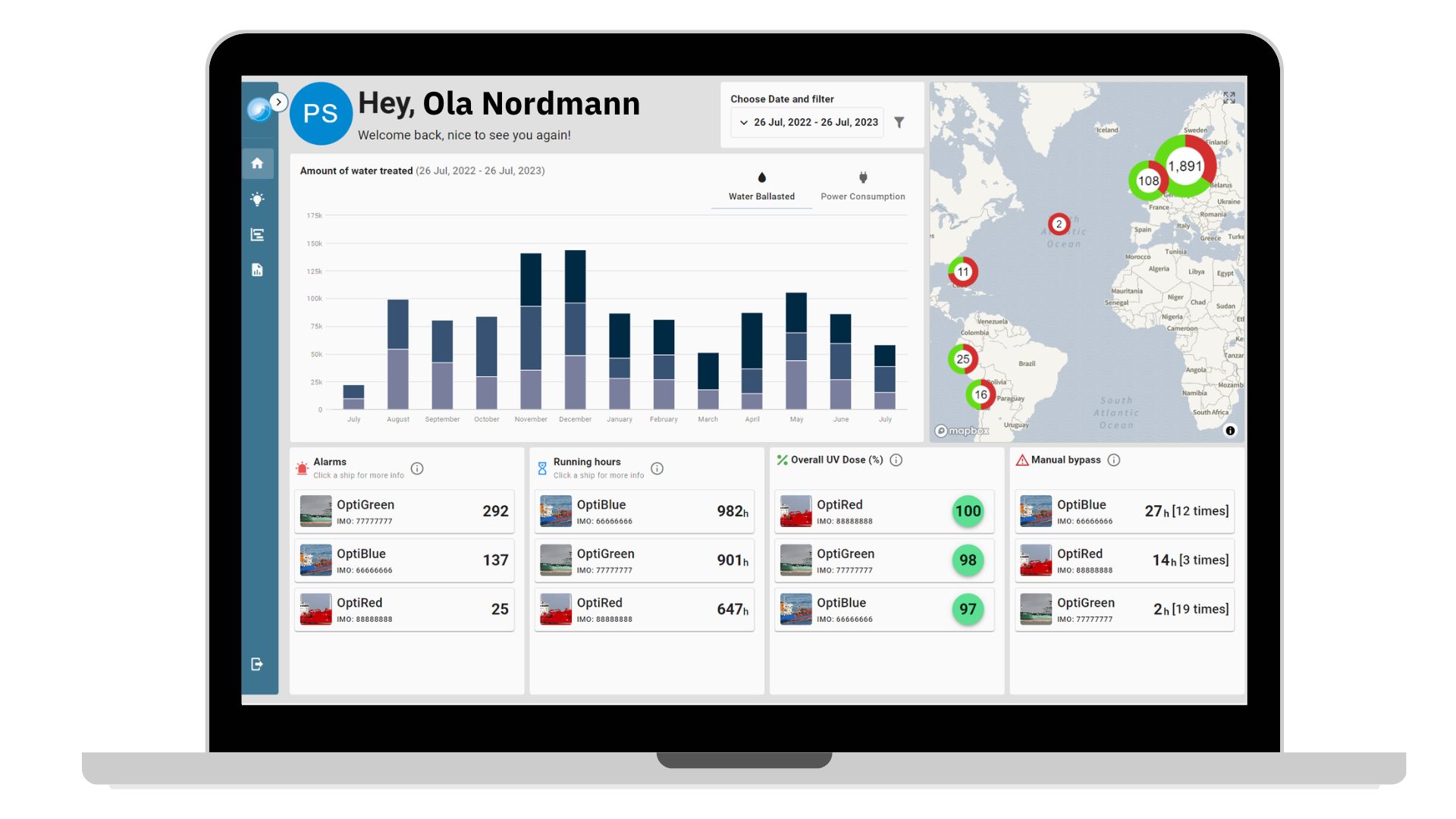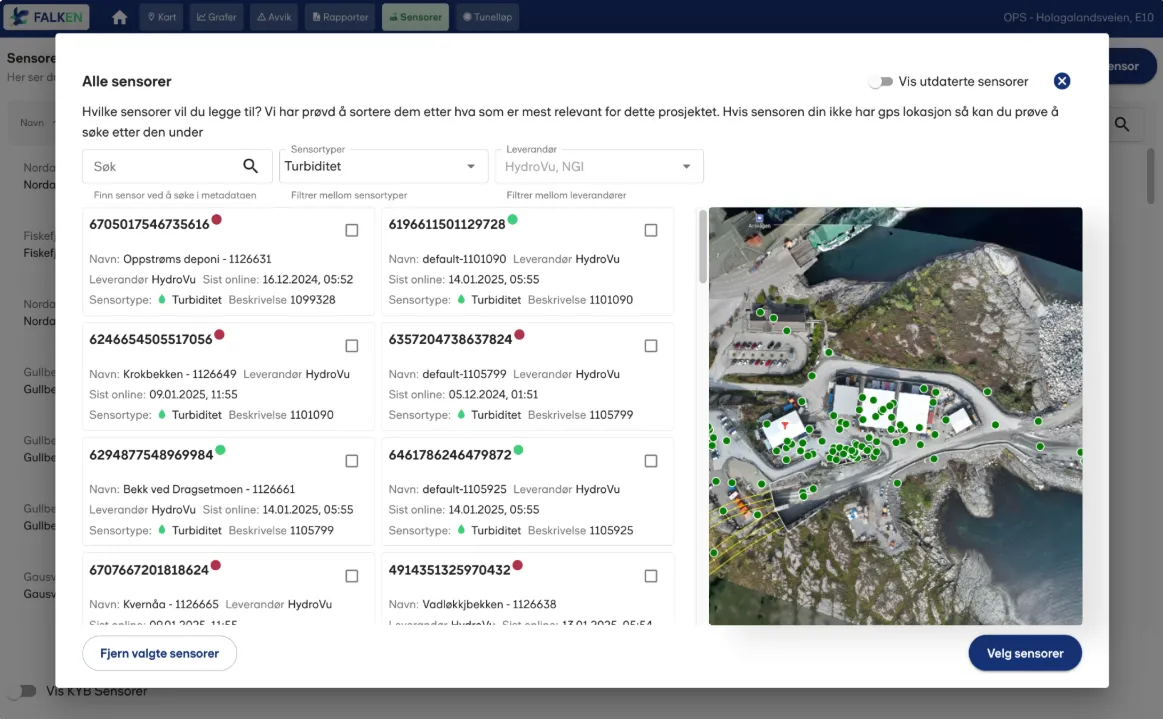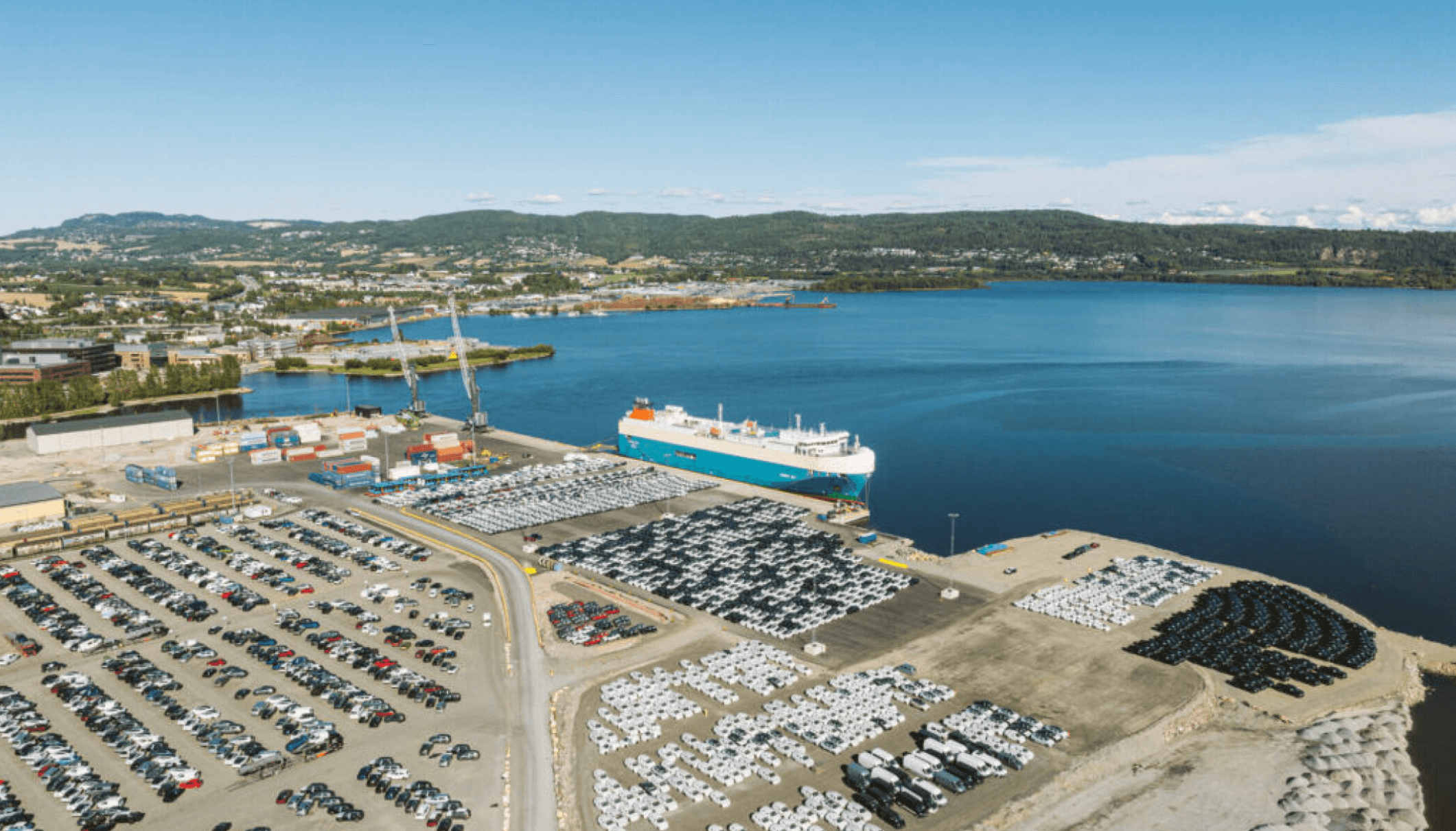Ballast water quality measuring and compliance reporting
Optimarin was sitting on large amounts of data on ballast water quality all over the world, but it was static and manually processed. They needed a better overview of this complex data to streamline their ballast water operations and efficiently report to the regulatory bodies for compliance.
Challenge
While ships are either in transit without cargo, carrying heavy cargo, or navigating turbulent waters, additional stability is necessary. Water is pumped into the ballast tank to ensure safe and stable manoeuvring of the ship.
When the same water is pumped out into the ocean in a different part of the world, it can cause environmental damage to the local ecosystem. That is why it’s important to measure and monitor the quality of the ballast water, and locate the optimal areas to perform the filling or dumping of the tank.
Optimarin, a Norwegian company providing a ballast water treatment system, was sitting on a vast amount of data on water quality from ports all over the world. However, they had no proper interface or overview of this data, and it was not accessible to their customers.
Solution
From the first workshop to production rollout, it took 2-3 weeks. Appfarm partner Digitread Connect used their KYB platform to gather all of Optimarin’s data on water quality and put it into context. The project was divided into two parts: edge connectivity and data visualization/application development in Appfarm.
Optimarin had the responsibility to send data to Digitread’s industrial data platform KYB, while they developed the application.
“Since we were able to visualize the data as soon as it was sent from the edge, we also made several iterations on the formats, frequency, and edge connection in tandem with the application development.”
– Lars Bergh Hvidsten, Product Manager at Digitread Connect.
Their project method was agile, with daily standups with Optimarin.
“The fun part with this was that from day to day, we could test and verify new functionality directly with Optimarin because we could focus on the front-end development instead of back-end services.”
Results
The solution shows real-time data with an overview of the water quality in ports worldwide. With a simple user interface and clickable maps, Optimarin customers are able to locate the areas where the water quality is optimal for filling. Optimarin can also use the platform internally for data-driven improvements of the filters.
Users of the application:
- Regulatory (DNV and Kongsberg)
- Optimarin Service Department
- Ship Owners
- Crew
Key Features:
- KPIs for all vessel in the fleet
- Ballast Water Operation log
- Port conditions insights
- Automated reporting
Key gains:
- Easy reporting for compliance:
Ballast water operations need to be reported to the regulatory bodies for compliance. This process, which used to take several hours, is now easily done and maintained on the platform. - Faster access to ports:
Optimarin has experienced that vessels have been granted access to certain ports faster since they were able to document that they comply with the regulations - Additional source of revenue:
While Optimarin was already offering systems for handling the ballast water, they are now able to provide their customers with an interface of detailed data on the water quality. - Remote service
The digital platform enables remote service for inspecting errors, which often is sufficient. This replaces the process of having to send the service team to the vessel, saving time and cost. - Ensuring more eco-friendly ballast water procedures:
By using non-polluted ballast water with less man-made contamination, they are able to protect the natural habitats and ecosystems where the ballast water is dumped. - Time saved in easily being able to locate important data:
All of Optimarin's data was previously manually collected, with no real-time overview of the current conditions. By implementing Digitread Connects digital sensor technology, combined with no-code for data handling, they have saved large amounts of time on manual work hours. - Reduction of cost and development time:
Being able to roll out the first version of the application in less than three weeks gave Optimarin the instant ability to take their new product offering to the market while easily being able to iterate and continue development.
ABout This Company
Client
Optimarin
Industry
Maritime
Use Case
Replace manual processes and static data management of water quality and compliance reporting for ballast water in ships
No-Code Solution
A visual tool for aiding compliant ballast operations worldwide, optimizing ballast operations to reduce port time, save fuel and time at sea
Key Results
- Compliance reporting to regulatory bodies
- Faster access to ports with compliance reporting
- Remote vessel service
- Additional product offering for Optimarin customers
- Ensuring more eco-friendly ballast water procedures
- Savings of fuel and time at sea
- Time and cost reduction
Developed by
Digitread Connect
Learn from other industry leaders
Dive into in-depth examples of business applications developed by enterprises in different industries.
Discover how innovation leaders are achieving digitization without code, through real examples of applications custom-built to their specific needs.









